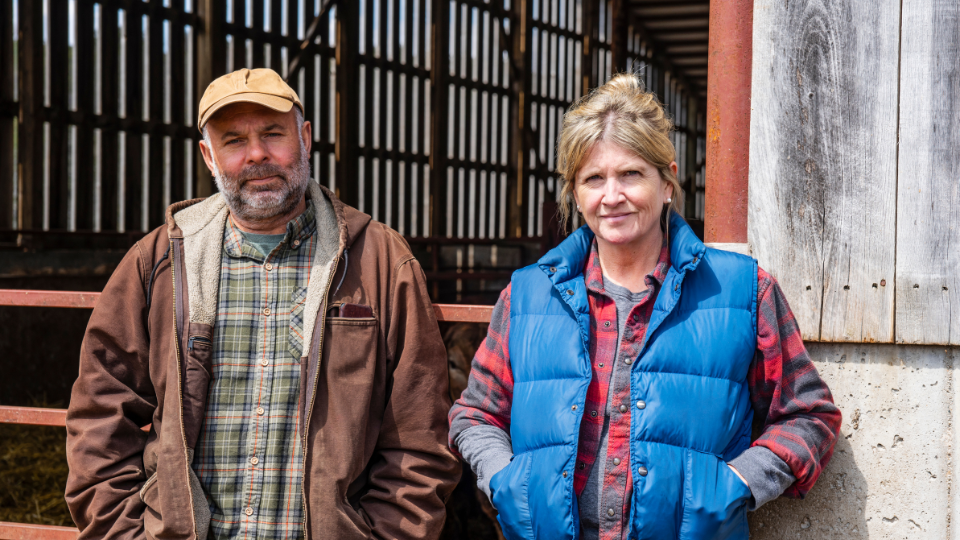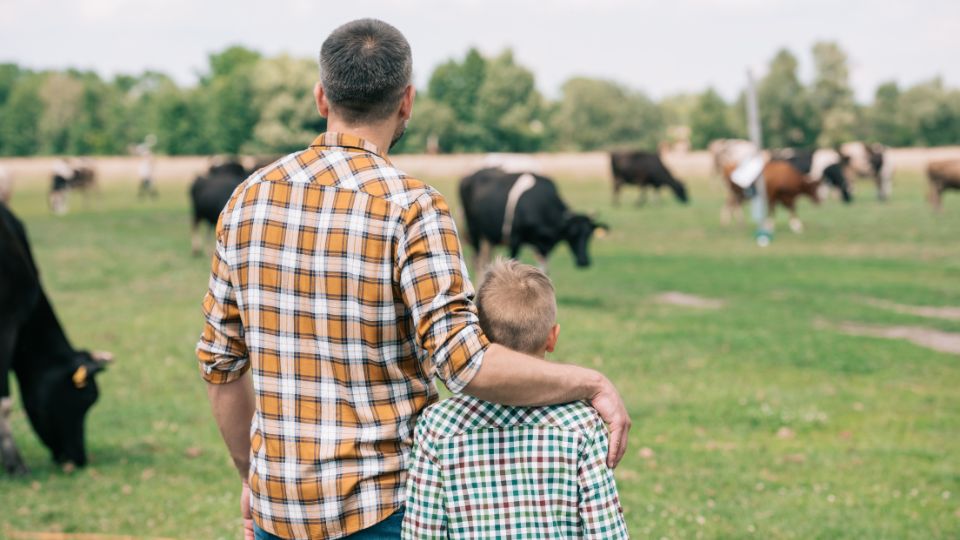Coping with Grief and Loss for Individuals

“To love at all is to be vulnerable. Love anything, and your heart will certainly be wrung and possibly be broken” – C. S. Lewis, The Four Loves, pg. 169
Because humans are social beings, we form strong relationships. When these relationships end, through death, divorce, or estrangement, it is natural to feel a sense of loss. Other types of loss can include a miscarriage, losing an agricultural production, crop failure, or losing a business opportunity. If you are here because you have personally lost someone or something that mattered to you, welcome. We hope this resource is useful for you as you navigate your grief. For clarity, we have written this article to focus on loss of a loved one, but the ideas can apply to other losses as well.
Factors Influencing Loss
While any loss is challenging, some types of loss can be more difficult to cope with (Mayo Clinic, 2021). Losses that are sudden or unanticipated can cause more distress than gradual, expected losses. Death of a child or a life partner may lead to more intense grief than death of someone who is more distant. Additionally, lack of social support and history of mental health concerns can predict more intense grief reactions.
Researchers divide loss into two broad categories: clear loss and ambiguous loss (Boss, 2007). In clear losses, there is a definitive end, such as having a funeral or the divorce being finalized. On the other end of the spectrum, losses can be ambiguous, meaning that key information is lacking. Examples of ambiguous loss include when a loved one has Alzheimer’s disease and related dementia or when a child goes missing. Research suggests that for many people, ambiguous losses pose unique challenges and may require more resources and support. In this blog post, we will focus on coping with grief and loss due to a clear loss.
Thinking about Grief
Following a loss, many people experience a sense of grief. Grief is defined as “the anguish experienced after significant loss” (VandenBos, 2015). To process grief, people engage in mourning. Early scholars who tried to understand the experience of grief created stage-based models and assumed that in order to process their experience, pretty much everyone would need to go through all of the stages, and that they would go through them in a similar order (Kübler-Ross and Kessler, 2005). They organized mourning into five sequential stages: 1. Denial; 2. Anger; 3. Bargaining; 4. Depression; and 5. Acceptance.
However, research suggests that while many people do experience some of these components of mourning, most people do not go through distinct stages of grief (Stroebe et al., 2017). Instead, grief is a unique experience for each individual some people experience low levels of grief for a long time, some people experience high levels of grief that decrease over time, some people experience low levels of grief initially and then more grief later on, and still others experience high levels of grief for a long time (Szuhany et al., 2021). Additionally, because this model emphasizes time passing as the primary way healing occurs, it can leave people feeling like healing is out of their control.
An alternative view of coping with grief, called the Task Model of Mourning (Worden, 2009), takes a very different approach. As the name implies, this view emphasizes tasks of mourning, suggesting an active approach to coping and making sense of the loss. The four tasks for individuals are as follows:
- Accept the reality of the loss. Rather than making the importance of the loved one small or acting as if they have not died, accept the loss on both an emotional level and an intellectual level.
- Make space for and process the pain of grief. Rather than avoiding the pain, accept it as evidence of how much the person matters to you. Allow yourself to feel whatever you need to feel, for as long as you need to feel it.
- Adjust to a world without the deceased. Rather than staying stuck in old routines, be willing to adapt to a new world. This can involve changing the way you interact with your family, exploring your spiritual or religious beliefs, and finding new meaning.
- Find a way to remember the deceased while moving forward in life. Rather than trying to forget or ignore the holes in your life, find a way to meaningfully remember your loved one and stay connected with them. You may find it helpful to establish rituals of connection, such as visiting a grave, sharing memories with others who knew them, or thinking of how they would want you to respond to a challenging situation.
Ideas for Application
It can be challenging to know where to begin in trying to make sense of a loss. You may find that the other ideas on this website—particularly the posts on taking a step back from unhelpful thoughts , acceptance, and values —are helpful starting points. Here are some ideas to begin acting on the tasks of mourning:
- Write about your experiences. If you enjoy writing, you may find it helpful to record your answers to these questions about the influence of the person you lost on your life. Go slow; answer just one or two of them in a sitting and then come back to them when you are ready.
- Talk with someone else. Getting support and giving support are powerful ways to process grief (Scott et al., 2020). If you know someone else who is also mourning the loss—a family member, friend, neighbor, or coworker—consider having a conversation with them where you both share your experiences. Just being with another person who is similarly hurting can help to ease your pain.
- Make space for your feelings. Acknowledge that you are hurting and try to name the specific feelings you are having. Hurting does not mean there is something wrong with you; it means you are human (Harris, 2021). You may find it helpful to use an emotion wheel like this one to find words that adequately describe your experience.
- Get oriented. If the stages of mourning sound familiar to you (Kübler-Ross & Kessler, 2005) discussed in the “Thinking about Grief” section above, then it may be helpful for you to map the influence of each component on your healing journey. This worksheet can help you understand how each component of grief has been part of your experience. Remember: most people do not experience grief in stages, so do not expect that this will show you the “right way to mourn” (Stroebe et al., 2017, pg. 460).
Conclusion
Coping with and responding to grief is a process unique to each person. Everyone experiences loss differently, and it is normal to cope differently from your family members or friends. Be patient with the process, while doing what you can to engage in the tasks of mourning. Some days, you may have a lot more energy to engage in active processing; other days, you may find that you just need to take a break from it all. This is normal and does not mean there is anything wrong with you. If you find that you are still struggling with intense grief a year after your loss or feel that you need help to work through things, professional counselors or grief support groups can be excellent resources to help heal (Szuhany et al., 2021). You can locate professional help in your area at https://www.psychologytoday.com/us.
References
- Boss, P. (2007). Ambiguous loss theory: Challenges for scholars and practitioners. Family Relations, 56(2), 105–110.
- Harris, R. (2021). The reality slap: How to survive and thrive when life hits hard (2nd ed.). Robinson.
- Kübler-Ross, D., & Kessler, E. (2005). On grief and grieving. Scribner.
- Lewis, C. S. (1960). The Four Loves. Harcourt, Brace, Jovanovich.
- Mayo Clinic. (2021). Complicated grief. https://www.mayoclinic.org/diseases-conditions/complicated-grief/symptoms-causes/syc-20360374
- Scott, H. R., Pitman, A., Kozhuharova, P., & Lloyd-Evans, B. (2020). A systematic review of studies describing the influence of informal social support on psychological wellbeing in people bereaved by sudden or violent causes of death. BMC Psychiatry, 20(1), 265. https://doi.org/10.1186/s12888-020-02639-4
- Stroebe, M., Schut, H., & Boerner, K. (2017). Cautioning health-care professionals. Omega, 74(4), 455–473. https://doi.org/10.1177/0030222817691870
- Szuhany, K. L., Malgaroli, M., Miron, C. D., & Simon, N. M. (2021). Prolonged grief disorder: Course, diagnosis, assessment, and treatment. FOCUS, 19(2), 161–172. https://doi.org/10.1176/appi.focus.20200052
- VandenBos, G. R. (Ed.). (2015). APA dictionary of psychology (2nd ed.). American Psychological Association. http://www.jstor.org/stable/j.ctv1chrw2d
- Worden, J. W. (2009). Grief counseling and grief therapy: A handbook for the mental health practitioner (4th ed.). Springer Publishing Company.
Related Research














